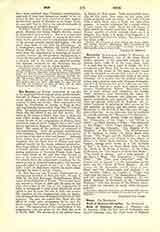

Bon Secours (DE PARIS), INSTITUTE OF, the first of the congregations of nursing sisters, gardes malades, founded in France during the nineteenth century, whose object is to take care of both rich and poor patients in their own homes. This congregation was begun by Archbishop de Quelen of Paris in 1822 and was formally approved by Pope Pius IX in June, 1875. Its members nurse the poor gratuitously. Patients who can afford it pay for such service. The habit of the sisters is black; they wear a white cap with frilled border and a black veil. Besides the sixteen houses of the congregation in France, there are four in Ireland, one in England, two in the United States, and one in Belgium. The mother-house is in Paris. The scope of the institute is expressed in the constitutions: “After the personal sanctification of its members, the principal aim of this pious society is the care of the sick in their own homes”. Although these sisters had governmental approbation and complied with the fiscal laws in France they have suffered heavily by the recent religious persecution. Four large schools which had been started in behalf of miners’ children and at the urgent request of the mining population of Northern France (Lille, Lens, etc.) were closed on the plea that they formed no part of the institute’s approved charter. And with the schools were also suppressed attendance by the sisters on sick or wounded miners and a very interesting work called “la goutte de lait “, or “the drop of milk,” a sort of dispensary wherein the sisters superintended the food of miners’ infants.
II. BON SECOURS (DE TROYES), INSTITUTE OF, a congregation founded at Arcis-sur-Aube, France, in 1840, by the Very Reverend Paul-Sebastien Millet, canon of the Cathedral of Troyes. The mother-house was moved to Troyes in 1843 and the name of that place was added to the title of the congregation in order to distinguish it from other sisterhoods whose object is also to nurse the sick in their own homes. The members of this congregation make no distinction because of the creed or financial condition of their patients. The poor are nursed free, those who can afford to make some recompense do so, and the sisters accept what is given them, but are not allowed to beg. The approbation of the constitutions of the congregation was not given by the Holy See until March 21, 1899. The novices go to the mother-house in France for three years. Vows are renewed annually for five years, then made for five years, and finally perpetual vows are taken. The habit is black with a small black cape, a black veil, and white guimpe. A crucifix suspended by a purple ribbon is worn round the neck. There are 120 houses of these sisters in various countries, most of them in France, outside of which territory there are 3 in Belgium, 4 in Italy, 1 in Spain, 3 in England, 1 in the United States, and 6 in Africa. The sisters number about 1,000.
THOMAS F. MEEHAN

